Mixing unit for underfloor heating: installation rules for the distribution manifold
It is a little more difficult to regulate a water heat-insulated floor than electrical analogues. Adjusting functions are performed by two important devices - a mixing unit for a warm floor and a collector that evenly supplies water to all system circuits.
Using them, you can get the optimal temperature of the coolant, as well as its amount, i.e. make the operation of heating equipment as efficient as possible. But how to properly install this important unit? We will talk about this in our article.
Let us consider in detail the features of installing a water heated floor in a high-rise building, and along the way we will analyze the device and the main functions assigned to the mixing unit.
We supplemented the material of the article with colorful photos and thematic videos on the assembly of the collector and the intricacies of mounting the mixing unit for a water heated floor.
The content of the article:
Functions and design of the mixing unit
This node is also called the mixing module, which fully corresponds to its purpose. This device is designed to mix water coming from the boiler with it, but from the return branch of the circuit, in order to obtain a coolant with an acceptable temperature.
The boiler usually heats the water quite strongly, up to 80-90 degrees. For underfloor heating systems, this temperature is too high, so the coolant needs to be diluted, and the easiest way to do this is by using a return flow that has already cooled down.
Such devices install heating systems with two or more working rings, if a warm floor is an additional way of heating simultaneously with radiators, and when the house is heated only with a warm floor.
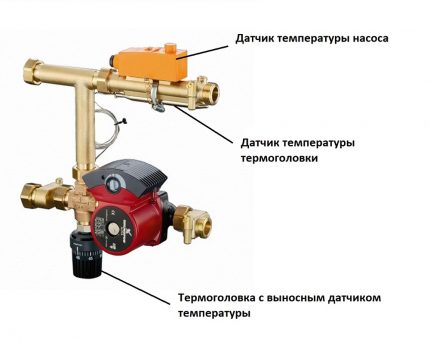
The main components of the mixing unit are two-way valves with thermostats, a three- or four-way valve, and circulation pump.
If the boiler is already equipped with such a pump, then for the underfloor heating you will have to purchase another device, it will work separately. The heat carrier is usually supplied to the radiators with a temperature of 70-90 degrees, but for warm floors it will have to be cooled to 35-40 degrees.
Here's how the process of mixing the cooled return in a system with three way valve:
- Hot water is supplied from the boiler.
- The coolant passes a three-way valve and enters the circuit leading to the underfloor heating manifold.
- The temperature sensor detects the temperature of the liquid.
- At temperatures above the norm, a three-way valve is activated.
- It opens, the mixing of the coolant with the flow of cooled liquid from the return begins.
- When the coolant temperature drops to a predetermined level, the valve closes.
A two-way valve blocks the flow of a new portion of the coolant into the circuit until the water circulating through it cools down to the required temperature mark.
Four-way reinforcing devices for underfloor heating are divided into two varieties: X-shaped, working on the principle of two-way taps, and rotary, allowing mixing of the hot heat carrier with return in perfectly accurate proportions.
In addition to the pump and valve, to install and use the mixing unit, you will need a temperature sensor, as well as a thermostat, which will turn off the pump if the water temperature is excessively high.
Often, the mixing unit is sold with the collector, but if it is not included, you will have to purchase and correctly install the necessary elements.
In this case, the following order should be observed: first they put a three-way valve, then a circulation pump, after which a collector is connected. With this scheme, the pump will supply coolant through the valve. If you put the pump in front of the valve, the latter simply will not work, since the flow will simply be directed incorrectly.
A check valve must be installed on the pipe through which the cooled coolant enters, so that cold water does not flow back into the system.
Another useful element that will ensure the normal operation of the mixing unit in systems with a two-way valve is bypass. If all openings on the collector are closed, the coolant will go into the system bypass and will circulate in a closed path until it cools down.
In heating systems with two-way shut-off and control valves, bypass is an obligatory element. In systems with three- and four-way cranes, you can freely do without it. True, along with a three-way bypass valve, it allows you to adjust both quantitative and qualitative indicators of the coolant.
In addition to the bypass, a balancing valve must be included in the circuit with a two-way valve, with which the volume of the coolant flowing through the bypass is regulated. This device is needed to control portions of cooled water mixed with hot coolant.
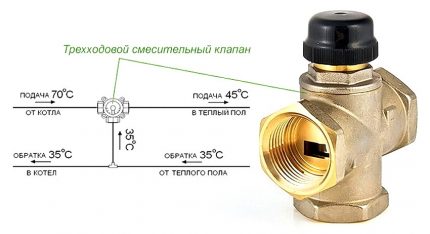
A set of devices, which is called a mixing unit, can be purchased at the store as a ready-made kit. But, according to the reviews of experienced masters, the purchase of individual nodes will be more reliable, and it will be cheaper. Systems with two-way valves and thermostats are suitable for compact circuits with small boilers.
When choosing a three- or four-way valve, you should consider its performance and the size of the area that the system serves.
In small areas, a device that misses about 2 cubic meters is enough. m coolant per hour. But if we are talking about an area of over 50 square meters. m, it is better to take a mixing crane with a capacity of 4 cubic meters per hour.
There is an adjustment cap on top of it, with it you can set the temperature of the coolant. Adjustment is not always necessary, since the manufacturer usually sets this indicator at an acceptable level.
High-performance models of three-way valves come not only with caps, but also with servos. But when connecting the mixing unit, it is necessary to take into account the features of the radiator heating system.
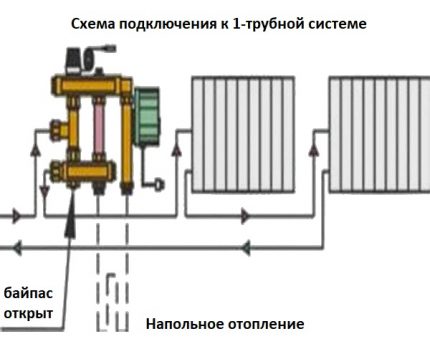
Bypass - a necessary element when installing the mixing unit. Experts recommend installing an overflow valve on it. This is necessary so that in the event of excessive pressure in the system, part of the coolant is redirected to the return.
An important condition for a single-pipe heating system is that the bypass must remain open so that the coolant flow constantly flows to the circuit. But when connected to double pipe system Bypass should be closed.
If the water floor serves as the main method of heating, then if you wish, you can completely do without installing the mixing unit.
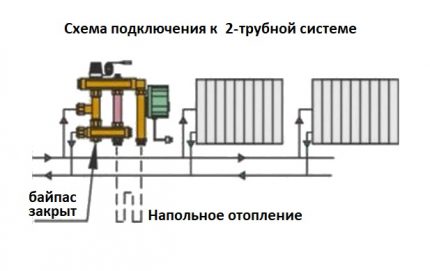
In this case, the function of the controller of the temperature of the water entering the circuit is performed by a thermal relay. In this case, the heat carrier, heated to 70-90 degrees, will immediately fall on the underfloor heating system.
As soon as this hot stream reaches the collector return, a thermal relay installed in this place captures the elevated temperature and stops the circulation of the coolant. When the water cools to a predetermined temperature, for example, up to 40 degrees, the thermal relay trips and circulation resumes.
This option has a significant drawback - not every floor covering easily tolerates heating up to 80 degrees.Neither for parquet, nor for linoleum, such a heating mode can be used, but for ceramic tiles this is quite an acceptable option.
Another case where the mixing unit is not necessary is when the heat carrier is heated by a heat pump, since the water temperature is unlikely to be higher than 40 degrees. By the way Heat pump can be made by yourself, significantly saving on the purchase of expensive equipment.
Purpose of Using the Collector
A collector is a device by which the flow of coolant is distributed over individual contours of the water floor, and then returned back for heating. The collector assembly looks like two pipes with holes to which the system circuits are connected.
The presence of a distribution manifold in the floor heating organization scheme makes it possible to control the volume of the coolant flow. One of the pipes of the collector is the supply one, hot water enters it and the inputs of the water floor circuits are connected to it.
The return circuit is connected to the return pipe of the collector. The holes to which such a connection is made are usually equipped with threaded, fitting or other connections.
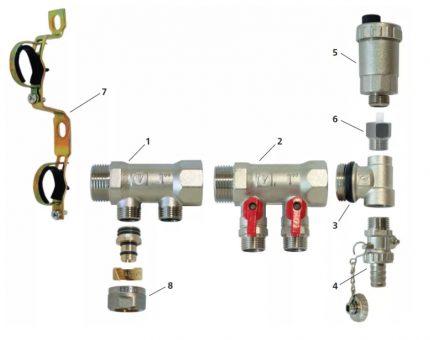
Various devices are installed here, with which you can adjust the flow rate of the coolant. The simplest version of a collector of industrial production is a pipe with a connector, which is called the Eurocone. This is a very convenient and reliable unit, but it does not allow you to control the flow of water.
To effectively use such a device, you will have to additionally purchase and install a number of elements.
The DPRK production manifold is a little more complicated. In addition to the connections at the outlet openings, valve taps are installed here; no automatic means for regulating the flow are provided. This is an excellent and inexpensive option for a water floor in a small area with two to three contours of the same length.
Such a system does not require complicated management. But on large areas, a collector of this type will have to be supplemented with automation.
In addition, the center distance between the feed and return sections of Chinese devices does not meet the standards adopted in Europe, which can cause problems when connecting it to European-made devices.
Ball valves in such devices are sensitive to poor quality water, and over time they begin to leak. To fix the problem, it is enough to replace the o-rings, but you must reckon with the fact that the need for such repairs will periodically arise.
If the operation of the water floor system is supposed to be automated, it makes sense to purchase at least a manifold with control valves.
Servo actuators connected to thermostats in the rooms can be installed on these valves. This will provide automatic control of the flow of the coolant in accordance with the data on the air temperature in a particular room.

The most difficult thing is to control the water floor system, in which individual circuits differ markedly in length, but in complex systems this usually happens. In such a situation, the best choice would be a collector, on the supply of which flow meters are installed, and on the return - sockets designed for mounting servos.
Using flow meters, it will be possible to adjust the flow rate of the coolant, and the servos in conjunction with thermostats allow you to set the appropriate temperature on each circuit.
If there is no need for automatic regulation, you can purchase a supply manifold with flow meters, and the return one with ordinary valve taps.
It so happens that it is not possible to choose a collector with the number of sockets for connection that corresponds to the project. Then you can take the device “with a margin". And the extra holes are simply covered with plugs.
This solution may be useful if you later need to add a couple more loops to the water floor system.
Features of installing a water floor in a high-rise building
It is believed that the construction of a water floor system in high-rise buildings is impossible, but this is not entirely true. In practice, the implementation of such a project can be implemented, but requires agreement with the central heating service provider. They can be arranged exclusively on the ground floors of buildings.
How to make a water floor in a multi-storey building?
Two options are used here: complete replacement of the radiator system water floor or installation of an additional heating system along with the operation of radiators.
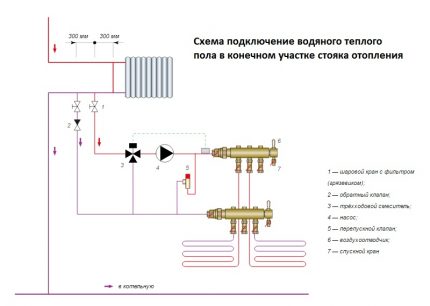
In the first case, it is necessary to carefully calculate the flow rate of the coolant in the new system, since it must correspond to the previous volumes. It is not necessary to reconstruct all the heating in the apartment, you can limit yourself to only one room.
If the water floor plays the role of auxiliary heating, heat meters are needed. In addition, it is necessary to clarify whether a centralized heating system can block increased power and coolant flow.
If in a high-rise building there is a radiator system with an upper wiring, then the connection of the water floor is best done at the junction of the return of the common riser with the main leading to the boiler room. Filters are required before the water floor.
This is necessary, given the low quality of the coolant in domestic centralized systems, otherwise the floor heating circuit will very soon become clogged.
Filters should be cleaned regularly. They are more than relevant for direct connection to the central heating system, but the use of a heat exchanger helps to make the problem of blockages less acute, and the work of the water floor more stable.
But you will need to mount expansion tankheat exchanger security group and filter.
Subtleties of mounting the collector
When mounting the water floor manifold, the supply of the device must be placed above the return. It can be done the other way around, but such a rearrangement does not make much sense.
The collector will work, just with the upper return part of the heat from the supply will be transferred to the return flow, i.e. thermal energy is simply lost.
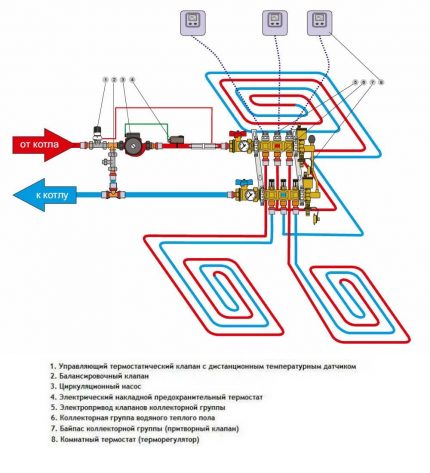
An important point is the installation of flow meters. They should be installed precisely on the giving part, on the "return" these elements are useless.
In addition to collectors, flow meters, and servo drives with temperature sensors, a drain valve is required for installation, as well as Mayevsky crane with adapter, connecting elements for water floor pipes, shut-off valve, etc.
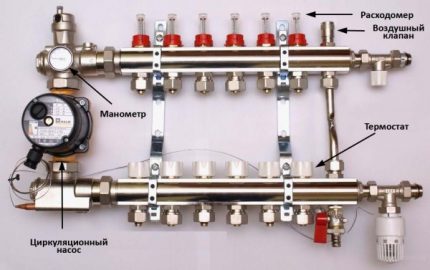
A collector cabinet is designed to install all of these devices. This is a metal box with doors, inside there are adjustable guides. Such a device greatly facilitates installation, but is not cheap.
Therefore, if there is a niche of suitable sizes in the area of the installation site, you can use it.
If the collector is mounted without a special cabinet, it must be suspended on the brackets. As for the installation location of the collector, the rule applies in this regard: the higher, the better, i.e. Mounting the collector is best at the top of the system.
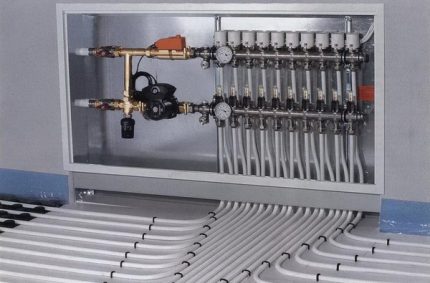
This is due to the need to remove air from the system from the system, for which a Mayevsky crane is installed at the top of the collector. In addition, it is best to install the collector at an equal distance from all rooms, i.e. closer to the center of the system so that the length of the individual loops is minimized.
Only one separate ring of underfloor heating can usually be attached to one collector. If the heating system is too complicated and you need to install more than nine circuits, you will need two or more collectors.
In a multi-storey building, it is not always possible to put a collector at the top. Then you can put it below, even in the basement. But the problem of removing excess air from the system will have to be solved differently.
The Maevsky crane on the collector itself will be useless. A device for venting air together with a shut-off valve installed in front of it will have to be installed on the return of each circuit.
Installation is carried out in the area between the pipe and the manifold; free access to the Mayevsky crane should be provided.
Thus, if the collector is installed too low, instead of one Mayevsky crane, you will need as many air vents as many circuits will be laid. Plus the same number of stopcocks.
The collector installation is carried out according to the following scheme:
- Installing a manifold cabinet or preparing a special niche.
- Collector assembly, installation of additional modules: servos, flowmeters, etc.
- Connection of the manifold supply to the pipe leading from the boiler.
- Installing a shut-off valve on the manifold return.
- Installing the manifold in a cabinet / niche.
- Accession of pipes to the giving and return part.
- Installation of the mixing unit.
- Checking the quality of installation, eliminating deficiencies.
Typically, the installation of the collector begins before pipe laying and pouring screeds, so you need to consider that at the end of the work the floor level will rise markedly. The collector cabinet already takes this point into account.
But when the installation is carried out using brackets, the device should be placed about one meter from the subfloor.
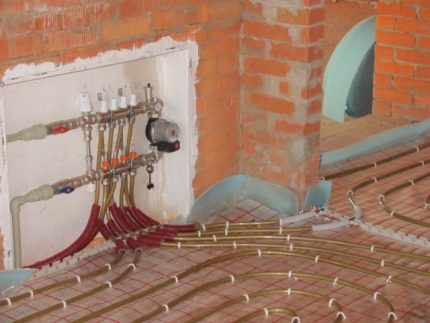
Do not suspend the collector too low, this position may complicate the process of connecting the pipes. Connection with polypropylene pipes that lead from the boiler is performed using a connector on which there is a nut for the thread of the manifold and a coupling for polypropylene pipes.
The air vent must be installed at the top of the manifold, and its head will be pointing up. But the heads of elements such as flow meters and servos, when properly installed, will point down.
Typically, the thread on the manifold is made three quarters of an inch, and Mayevsky taps have half-inch threads, so you need to use an adapter. The adapter material must match the collector material.
There are two threads on the manifold return pipe, one of them is needed to connect to the heating boiler, and the second is to install a shut-off valve.
All threaded connections need a seal, which can be realized with a sealing ring or, if there is no such ring, by winding tow, linen thread, FUM tape, etc.
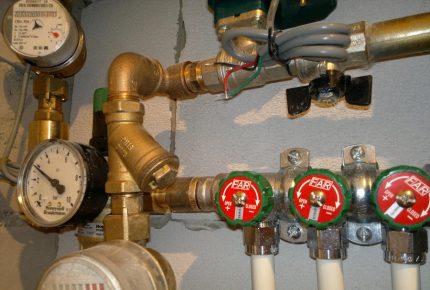
When connecting a metal-plastic pipe to the collector connector, you need to flare the pipe edge and strip it. This measure will keep the seals from accidental damage.
After that, the union nut should be put on the pipe, then the compression washer, carefully connect the pipe to the connector, tighten the nut by hand, and then carefully tighten with an adjustable wrench.
Before or after the collector, a mixing unit should be installed. If the installation of this unit is not provided for some reason, a bypass with a shut-off valve is mounted instead.
The mixing unit is usually fastened with union nuts. Such elements require the mandatory use of rubber gaskets.
Making a homemade collector
To make a collector from polypropylene pipes, it is recommended to use designs with a diameter of 32 mm or 25 mm, their corresponding tees and shut-off valves.
How many loops of underfloor heating will be connected, how many tee and valves will be needed for the collector. You will also need to purchase a circulation pump and valve for the mixing unit.
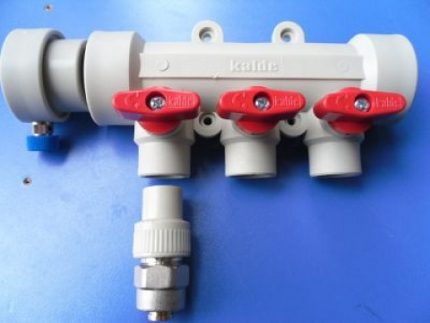
To solder pipes, you need a special soldering iron, as well as at least minimal experience using such equipment. From tees and pipes form the supply and outlet section of the collector. The pipe segments must be very short so that the tees are separated by a very small space.
After that, shut-off valves are soldered, as well as fittings for connection to the pump, etc. Such a simple device will cost inexpensively if you do not install flow meters and other control elements.
But a more advanced plastic collector is easier to buy than to do, the cost of such a device is low.
Conclusions and useful video on the topic
Interesting material on the assembly and installation of the mixing unit:
The video demonstrates the process of assembling a set of collector elements:
About the independent manufacture of an inexpensive collector is described in this video:
Distribution as well as mixing units are very important elements for a water floor. You can do without them only if the system includes only one or two circuits and occupies a small area.
But if it is decided to create a high-quality water floor, then all these nodes must be assembled and installed correctly so that the system works with maximum efficiency and minimum costs..
You have been installing a water floor for several years and in practice are familiar with all the subtleties of this process? Share your experience in the comments to the article - for beginners, this information will be extremely useful.
Or maybe you found a mistake or inconsistency of the material presented in the article, theoretical standards? Please write about this in the comments section.

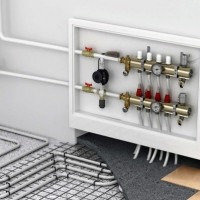 Water underfloor wiring diagram: versions and device manual
Water underfloor wiring diagram: versions and device manual  Insulation for warm water floors: rules for selection and installation
Insulation for warm water floors: rules for selection and installation 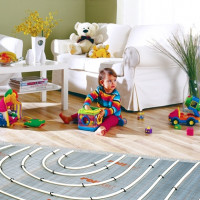 How to make a calculation of a warm floor using the example of a water system
How to make a calculation of a warm floor using the example of a water system  Laying schemes for a warm water floor: analysis of the most effective installation options
Laying schemes for a warm water floor: analysis of the most effective installation options 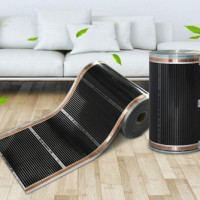 Infrared film for underfloor heating: types of films, how it works, laying rules
Infrared film for underfloor heating: types of films, how it works, laying rules 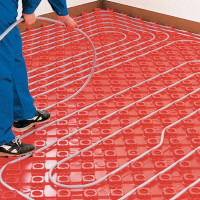 Laying underfloor heating pipes: installation + how to choose a step and make a less expensive circuit
Laying underfloor heating pipes: installation + how to choose a step and make a less expensive circuit  How much does it cost to connect gas to a private house: the price of organizing gas supply
How much does it cost to connect gas to a private house: the price of organizing gas supply  The best washing machines with dryer: model rating and customer tips
The best washing machines with dryer: model rating and customer tips  What is the color temperature of light and the nuances of choosing the temperature of the lamps to suit your needs
What is the color temperature of light and the nuances of choosing the temperature of the lamps to suit your needs  Replacement of a geyser in an apartment: replacement paperwork + basic norms and requirements
Replacement of a geyser in an apartment: replacement paperwork + basic norms and requirements
Useful article. And yet I think it is necessary to supplement it with the topic of connecting air temperature sensors - then the system will become even more economical.
My question is: is it possible to connect the battery from the hot water supply circuit to the underfloor heating and to bring the output pipe from the loop type battery to the battery and vice versa into it? As a result of such a connection, the battery does not heat up ... pipes to the battery come from the primary circuit. Please help with advice on what to do so that the battery starts heating the room?
Here, as it were, the question itself contains the answer: since the battery does not heat up after the implementation of such a connection, then you need to redo it. It is also possible that the problem lies in the airing of the system, therefore, the radiator does not heat.
To prevent this from happening, you need to install an air vent, in which case the following elements are also needed:
- coarse filter;
- control valve;
- circulation pump.
I enclose a direct connection of underfloor heating to central heating. And another question: do you currently use a circulation pump?
Yes, there are still good people in our country who share their experiences with compatriots. And what to do honest and not indifferent to a power if the state is turned back to people.
On the floor heating unit, the pressure pump was installed with the shell down. Is this right or wrong?